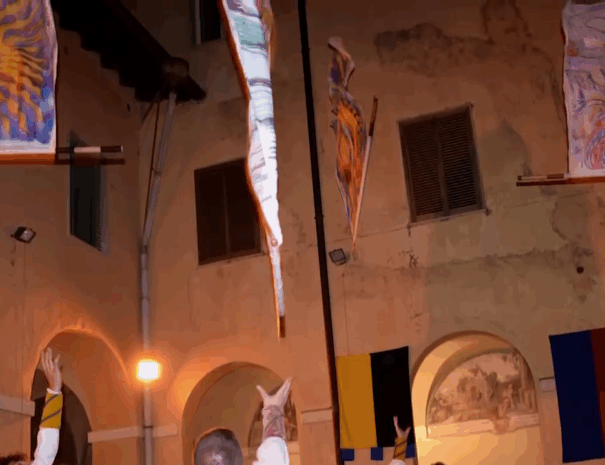Jo Pallio della Carriera: l’anima storica di Carpineto Romano
Ad agosto, Carpineto Romano si trasforma in un vero e proprio teatro a cielo aperto con Jo Pallio della Carriera, una delle rievocazioni storiche più affascinanti del Lazio. È una settimana di festa, passione e tradizione che coinvolge tutto il paese e che ogni anno richiama visitatori da ogni parte.
I sette rioni storici – San Pietro, Jo Casteglio, Jo Laco, Jo Curso, San Gnaco, Sant’Agostino e Jo Moro – sfilano in abiti seicenteschi, tra tamburi, chiarine e bandiere, portando in scena lo spirito e l’identità di una comunità profondamente legata alla propria storia. Il momento più atteso è la spettacolare giostra equestre all’anello, una sfida di abilità tra cavalieri che si contendono il Pallio, simbolo d’onore per il rione vincitore.
Non mancano le hostarie, le antiche osterie allestite per l’occasione da ogni rione, dove è possibile gustare piatti tipici, ricette tradizionali e rivivere i sapori di un tempo.
Soggiornare nel nostro B&B a Carpineto Romano durante il Pallio significa vivere tutto questo a pochi passi da cortei, spettacoli e sapori. Un’occasione unica per scoprire un borgo autentico, ricco di cultura, storia e accoglienza.








Richard McClintock, a Latin scholar from Hampden-Sydney College, is credited with discovering the source behind the ubiquitous filler text. In seeing a sample of lorem ipsum, his interest was piqued by consectetur—a genuine, albeit rare, Latin word. Consulting a Latin dictionary led McClintock to a passage from De Finibus Bonorum et Malorum (“On the Extremes of Good and Evil”), a first-century B.C. text from the Roman philosopher Cicero.
It’s difficult to find examples of lorem ipsum in use before Letraset made it popular as a dummy text in the 1960s, although McClintock says he remembers coming across the lorem ipsum passage in a book of old metal type samples. So far he hasn’t relocated where he once saw the passage, but the popularity of Cicero in the 15th century supports the theory that the filler text has been used for centuries.
And anyways, as Cecil Adams reasoned, “[Do you really] think graphic arts supply houses were hiring classics scholars in the 1960s?” Perhaps. But it seems reasonable to imagine that there was a version in use far before the age of Letraset.
And anyways, as Cecil Adams reasoned, “[Do you really] think graphic arts supply houses were hiring classics scholars in the 1960s?” Perhaps. But it seems reasonable to imagine that there was a version in use far before the age of Letraset.
Richard McClintock, a Latin scholar from Hampden-Sydney College, is credited with discovering the source behind the ubiquitous filler text. In seeing a sample of lorem ipsum, his interest was piqued by consectetur—a genuine, albeit rare, Latin word. Consulting a Latin dictionary led McClintock to a passage from De Finibus Bonorum et Malorum (“On the Extremes of Good and Evil”), a first-century B.C. text from the Roman philosopher Cicero.
It’s difficult to find examples of lorem ipsum in use before Letraset made it popular as a dummy text in the 1960s, although McClintock says he remembers coming across the lorem ipsum passage in a book of old metal type samples. So far he hasn’t relocated where he once saw the passage, but the popularity of Cicero in the 15th century supports the theory that the filler text has been used for centuries.




